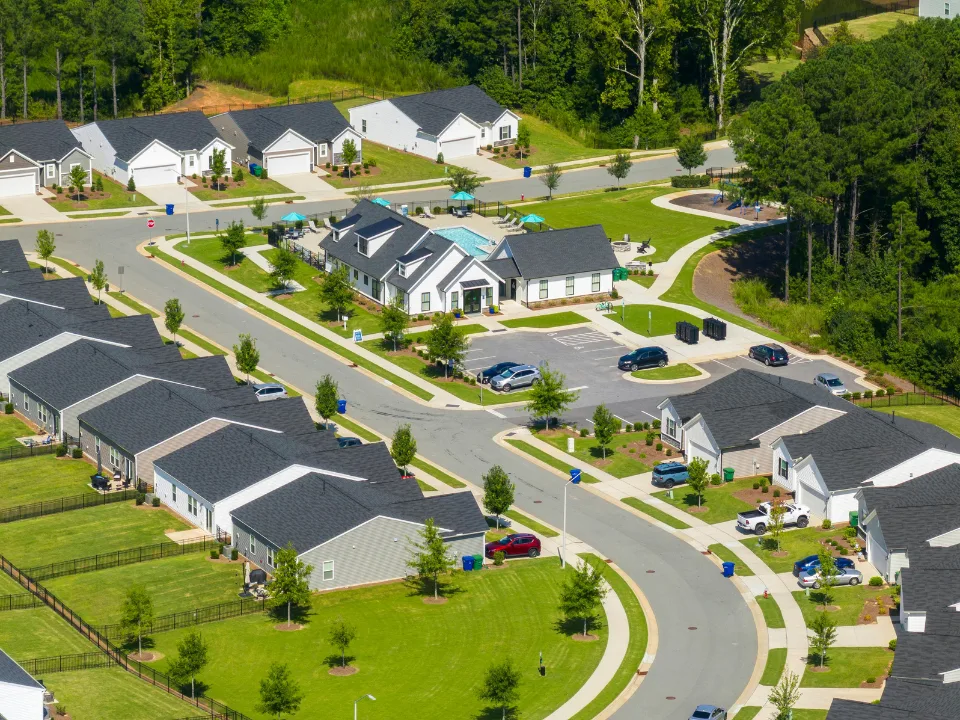- Raleigh, NC tops the list for its strong biotech and tech sectors, rapid population growth, and affordable living costs.
- Austin, Nashville, and Salt Lake City are among the top five, reflecting a trend toward mid-sized cities with diversified economies and startup ecosystems.
- Job-rich, high-income cities increasingly feature tech, healthcare, and finance as economic anchors, supported by migration, universities, and remote work integration.
- Rust Belt and Central Valley cities face persistent challenges, with high unemployment and limited industry diversification.
The Big Picture
According to GlobeSt, a new analysis from Checkr identifies 15 US metros where economic resilience is translating into robust job growth and rising incomes. Notably, these cities are gaining ground in 2025 as the American job market evolves under the pressure of AI disruption, remote work shifts, and demographic changes.
Who’s Winning
Leading the pack is Raleigh, NC, once best known for its academic institutions. Today, it has transformed into a biotech and tech powerhouse. Meanwhile, Nashville leverages its dual identity in healthcare and entertainment to attract a younger workforce and significant investment.
Similarly, Austin continues to thrive despite broader tech sector volatility. Its business-friendly climate and affordable living costs remain a draw. In fourth place, Salt Lake City is rising fast, thanks to a booming financial sector and growing tech scene. Rounding out the top five is Portland, Maine, which has successfully integrated remote work into its economy, all while keeping unemployment low and wages rising.
What Sets Them Apart
Importantly, cities on the rise tend to share several defining traits:
- Low unemployment and rising labor force participation
- High-paying jobs in future-forward industries like tech, finance, and healthcare
- Economic diversification, which cushions against downturns
- Strong university systems and a consistent influx of new residents
Moreover, these cities have cultivated environments where startups and established companies alike can flourish. This ecosystem of innovation plays a key role in attracting and retaining talent.
Get Smarter about what matters in CRE
Stay ahead of trends in commercial real estate with CRE Daily – the free newsletter delivering everything you need to start your day in just 5-minutes
Who’s Lagging
On the other hand, several cities continue to struggle. For example, Bakersfield and Fresno, CA remain highly dependent on agriculture and energy, both of which are prone to economic swings. Likewise, McAllen, TX, lacks fast-growing sectors, limiting upward mobility.
Elsewhere, Jackson, MS, along with Scranton, PA, and Rochester, NY, continue to battle population decline and limited workforce development. Additionally, Memphis, Augusta, Toledo, and Spokane face challenges such as stagnant wages and aging infrastructure. In each case, economic underperformance is paired with a failure to diversify beyond legacy industries.
Earnings Leaders
While overall economic resilience drives the broader rankings, some metros stand out specifically for income potential. For instance, San Jose continues to offer the nation’s highest median incomes due to its deep tech roots. However, this comes at the cost of affordability.
Likewise, San Francisco remains a high-wage city, particularly in finance and legal sectors. Furthermore, Austin, Denver, and Seattle combine strong wage growth with livable conditions, making them highly attractive to remote and hybrid workers. Additionally, emerging hubs like Bridgeport, CT, and Miami, FL are gaining momentum for their high-income potential.
Why It Matters
Ultimately, the new geography of opportunity is being shaped by cities that prioritize economic adaptability, talent development, and industry diversification. For job seekers—whether recent graduates or experienced professionals—this shift opens up more viable options beyond traditional powerhouses like New York or Los Angeles.
Conversely, cities that fail to adapt risk being left behind. Thus, urban leaders must double down on policy innovation, workforce education, and inclusive development to remain competitive.
What’s Next
Looking ahead, expect continued momentum in cities that invest in infrastructure, education, and industry partnerships. The job market in 2025 favors agility—from both cities and individuals. Going forward, the most resilient metros will be those that turn disruption into opportunity.
Top 15 Cities for Economic Resilience and Earnings in 2025
(Alphabetical Order)
- Austin, TX
- Bridgeport, CT
- Charleston, SC
- Charlotte, NC
- Denver, CO
- Indianapolis, IN
- Miami, FL
- Nashville, TN
- Omaha, NE
- Portland, ME
- Raleigh, NC
- Salt Lake City, UT
- San Francisco, CA
- San Jose, CA
- Seattle, WA

















